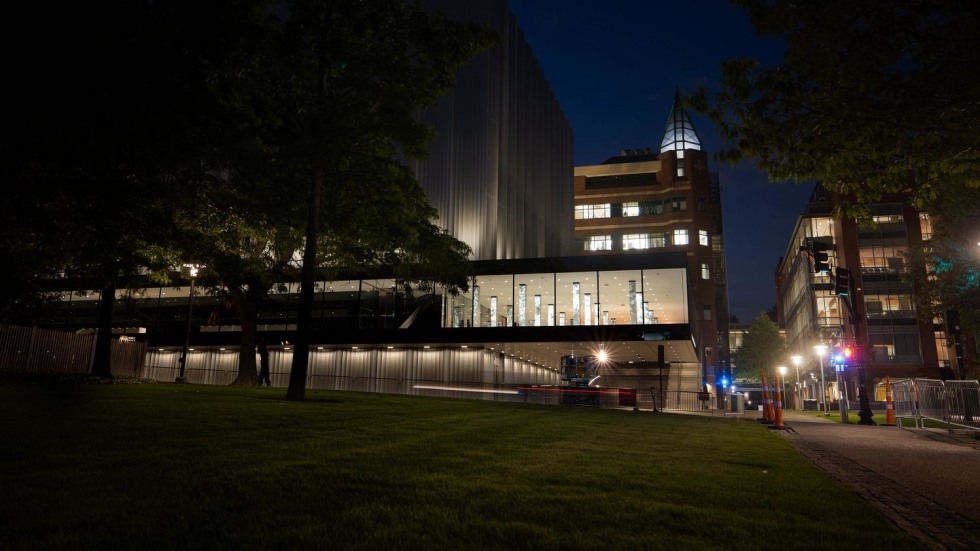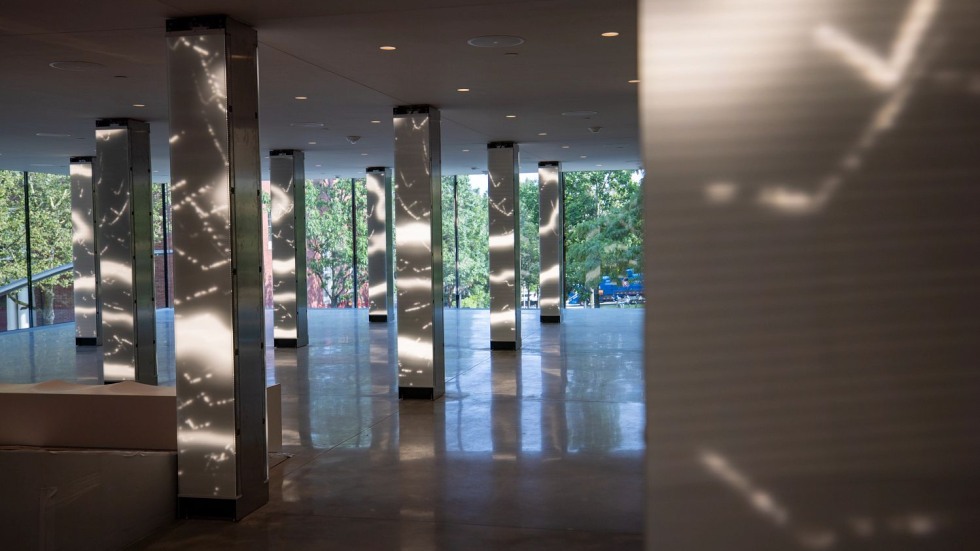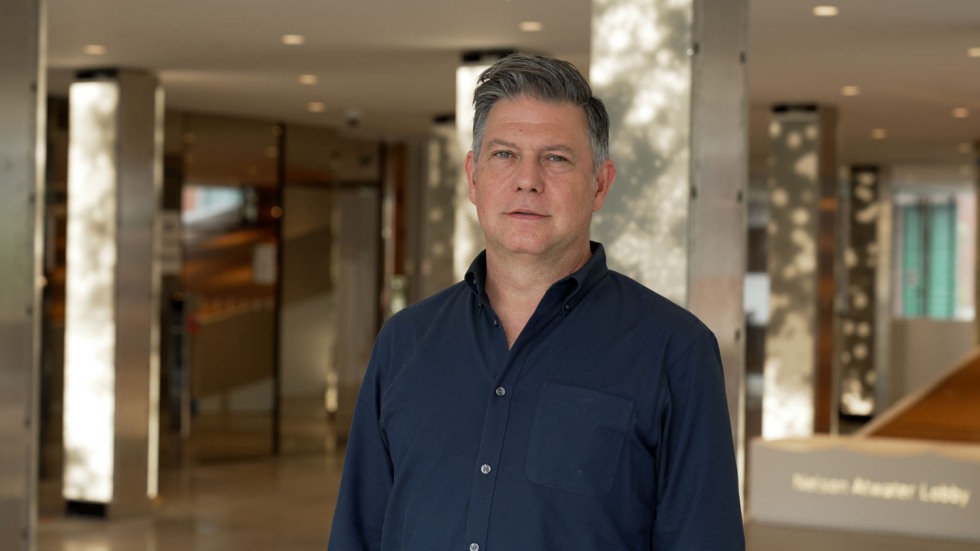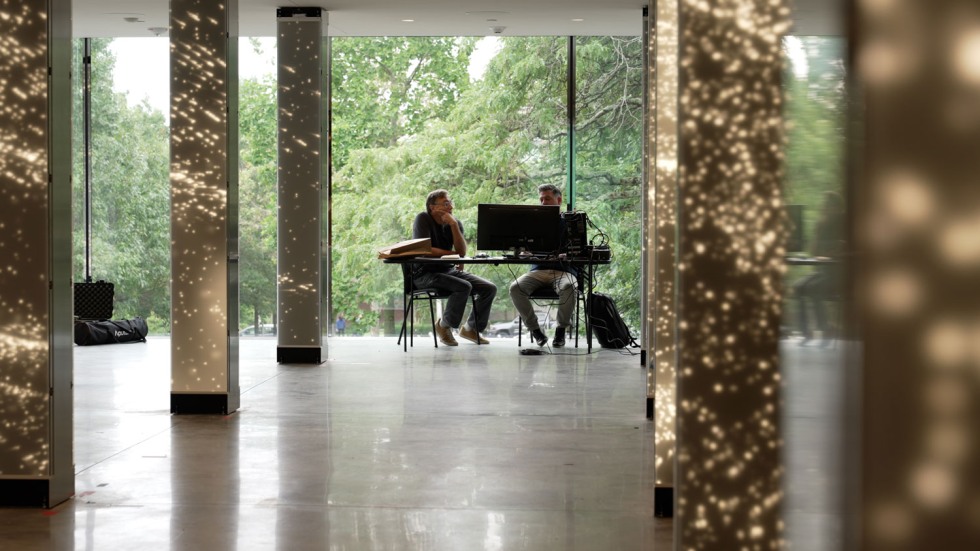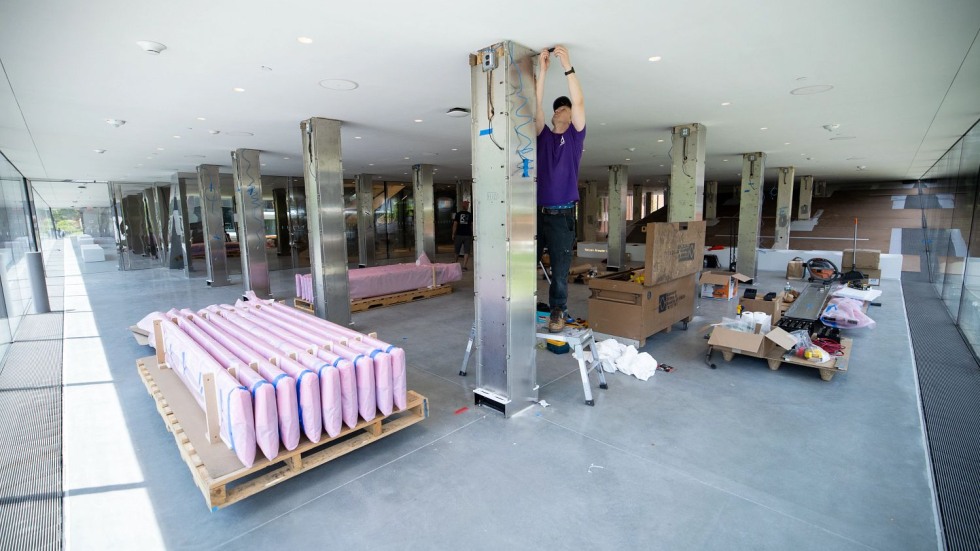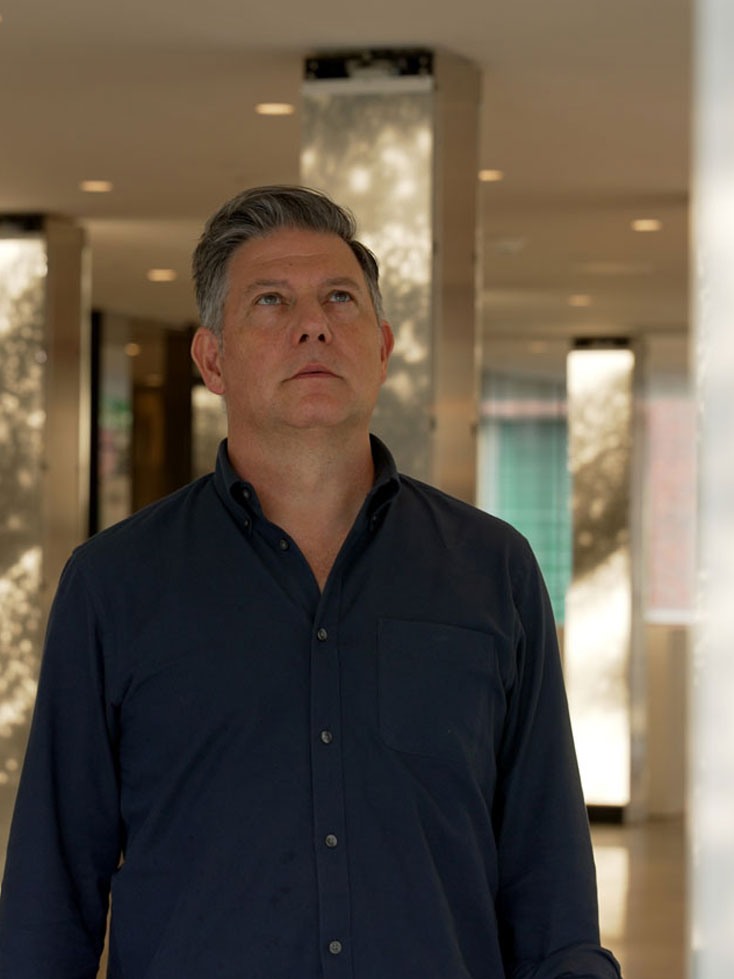PROVIDENCE, R.I. [Brown University] — Brown University’s soon-to-open Lindemann Performing Arts Center has its first piece of public art: “Infinite Composition,” a site-specific, three-dimensional light work designed by award-winning artist Leo Villareal.
A world-renowned artist, Villareal has designed such iconic pieces as “The Bay Lights,” which illuminated the San Francisco-Oakland Bay Bridge for 10 years; “Illuminated River,” which uses light to unite nine bridges across the River Thames in London; and “Stars,” a series of animated light pieces that adorn the Brooklyn Academy of Music.
The new installation at Brown lights up all 30 structural columns inside the Nelson Atwater Lobby on the east end of The Lindemann Performing Arts Center in the Perelman Arts District at Brown. When The Lindemann opens in Fall 2023, it will serve as a new home for the arts at Brown and promises to push the boundaries of innovation to inspire new forms of art-making and artistic collaboration.
Villareal’s work enlivens the lobby with panels of white LED lights that flow in an endless variety of patterns. Thanks to a transparent glass “clearstory” that slices through the middle of the building, the installation is viewable from the street and adjacent campus spaces — inviting community members into the creative activity of the building.
